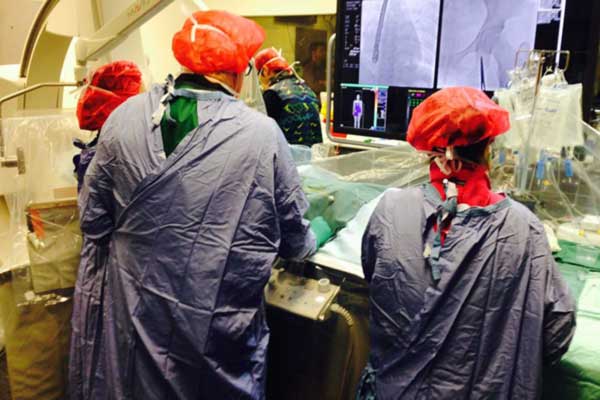A review by the Australian Commission for Safety and Quality in Health (ACSQHC) in medical procedures in local areas showed that women living in Maryborough, Victoria, were almost seven times the hysterectomy rates as women living in Gungalina in ACT.
Medical adviser ACSQHC Professor Ann Duggan hoped that the data will prompt doctors and patients to start talking about how the appropriate care looks.
“When we see almost sevenfold variations in hysterectomy rates, we really need to ask:” Do women know about the treatment options that are now available? “, – she said.
One of the biggest differences in endometrial ablation rates is the procedure that patients prescribe for abnormal uterine bleeding.
Women in Barney in Tasmania were 20 times more cured than in Fairfield, New South Wales.
There were also significant differences in the number of hospitalizations for chronic lung diseases, heart failure, diabetic cellulitis and kidney and urinary infections.
Kimberly in Western Australia and the depth of North Queensland had the highest rates of potentially preventable conditions.
The lowest rates of preventable hospitalization were in Dural in NSW, Indooroopilly in Qld and Barwon-West in Victoria.
Why are there significant differences?
There are several reasons for the variation in surgery and treatment.
For example, in cases of hysterectomy, doctors and patients may not be aware of less invasive options, the report’s authors report.
The report says that different rates of hospitalization from a chronic illness “tell a story of injustice.”
“Three often overlapping groups had a higher level of hospitalization from chronic diseases – people living in remote areas, people living in socio-economic disadvantages areas, and Aboriginal and Torres Strait Islander Australians.”
The report says that the key to lowering rates is to improve integrated primary care with a stronger role in aid coordination.
During this period, about 82% -83% of hospitalizations associated with the operation were elective methods (about 1.9 million in 2010-11), with about two-thirds of them in private hospitals.
About 4% of surgical interventions were associated with childbirth and 1% were intended for another planned treatment.
Who had the operation?
Men and boys accounted for about 55% of emergency cases associated with surgery.
On the contrary, about 56% of elective hospitalizations associated with surgery were for women and girls.
Compared with other Australians, Indigenous Australians had:
A higher level of emergency hospitalization with surgery (about twice as high) and
The lower frequency of elective hospitalizations with surgery (about 60%).
Compared to national tariffs, people living in very remote areas had:
The highest level of admission in emergency situations, including surgical intervention and
The lowest level of electoral assumptions associated with surgical intervention.
For elective assumptions related to surgical intervention, the level of hospitalization:
For public hospitals – was the highest for those who live in areas classified as the lowest socio-economic group.
For private hospitals – was the highest for those who live in areas classified as the highest socio-economic group.
How long did the patients last?
Only more than 50% of hospitalizations associated with surgical intervention were one-day methods that took into account:
40% of surgical hospitalizations in public hospitals (8% of admissions in emergency situations and 52% of elective hospitalizations) and
57% – in private hospitals (11% on admission to school and 59% of elected hospitalizations).
For one-day hospitalizations associated with the operation, the average length of stay was:
8.3 days for reception in emergency situations and 3.9 days for elective hospitalizations in public hospitals
8.2 days for reception in emergency situations and 3.3 days for selective hospitalizations in private hospitals.
How long do patients wait?
Waiting time information was available for approximately 620,000 patients admitted from the waiting lists in public hospitals in 2010-11.
The average waiting time for elective surgery is the number of days during which 50% of patients were taken from the waiting list of the sample.
In 2010-11, 50% of patients from the waiting list were waiting 36 days or less, and 90% were admitted for 252 days.
Ophthalmology was a surgical specialty with the longest average waiting time (70 days), and cardiothoracic surgery had the shortest (16 days).




















